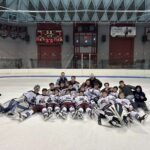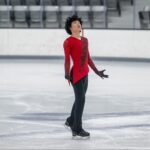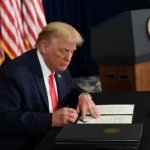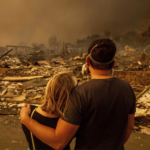Interviewed by, Colin Funtleyder
(Promoted to High School Assistant Principal for the 2018-19 school year.)
So before we begin, all these questions have been submitted by Blind High School students and selected by the editorial staff. What brought you to the Blind Brook School District?
Greenwald: Back in the 90s after graduate school, I was originally certified and looking for an administrative position. I had been teaching for 10 years already before I came to Blind Brook. I looked at several Principal, Assistant Principal, and Dean positions, and I really did not find anyone that suited me. I came across Blind Brook as a fallback position, I took a social studies position in the middle school. And I’ve been here ever since. My children graduated from Blind Brook Schools and Blind Brook has been an integral place for my entire family
What is Blind Brook’s greatest strength?
Greenwald: I think Blind Brook’s greatest strength is the closeness and size of the community. I also think that this can be a challenge. You can go through this school district k to 12 and in most cases, you’ll know every person’s name and grade. I think that’s a wonderful aspect of our community, and our town proudly recognizes that.
Students wonder why there has been so much turnover in administration over the past 10 years, why do you think that is?
Greenwald: That’s a good question. I don’t blame the district. Change is inevitable. There are changes from year to year. Changes in priorities, whether they originate from the Board of Education, administrators, classroom teachers, students, and families. Sometimes administrators are brought in, and they don’t always have a great understanding of the climate of Rye Brook. What people are thinking about, what they expect, what their sensibilities are. We have something for our new teachers called the New Teacher University, where we help teachers with everything from how to compose an email, to how to communicate, to how to enter grades and how to work with the school. But we don’t have one of those for administrators and I think we would be better off and better served with our administrators if we had a better training program when they come in.
What are your ideas for making Blind Brook better?
Greenwald: The Blind Brook of the late 90s and early 2000s is demographically different than today. We have always been comprised of middle and upper middle class families. Our family populations have become more diverse in recent years. In particular, we have seen noticeable growth of Asian, Indian, and Hispanic populations. I think one of the challenges, whether it’s curriculum-based or driven by social needs, is fostering a culture of inclusivity. I think we have to be very sensitive and aware that the homogeneity of Blind Brook has been evolving. If we don’t keep up meeting the demands of this changing diverse population, we’re going to fall short. So I think that’s probably the number one goal that I would say to make Blind Brook a better place to be more inclusive.
What do you want to remain the same at Blind Brook?
Greenwald: When I first started teaching here a long time ago before they built the whole new middle school wing, many high school classrooms didn’t even have doors or walls. They were literally connected by a little pass-through hallway. To get to the bathroom you would have to go through all the connecting rooms, a student would have to go through my room. I would always make the student answer a history question to allow them to pass through. That’s what I’m talking about when I refer to the closeness of the school. Some of the informality of those days is gone. It is important to note that we are still a small district. The elementary 5th grade teachers should take advantage of our closeness and collaborate with middle school teachers to arrive at shared learning goals. The same holds true for 8th grade teachers engaging in healthy pedagogical discussions with high school teachers. If we can maintain a robust K-12 dialogue, we will continue to thrive as an educational institution. The closeness and camaraderie of a small school is something I value. I want to see those connections continue.
If you could pinpoint one weakness in Blind Brook School District, what would it be?
Greenwald: One of the concerns that I have as we get into winter is the efficient use of space. Right now we have the luxury of people eating outside for lunch. During lunch for example, we can count on some seniors to go out for lunch and we can spread out between the commons, the cafeteria or other areas. One weakness is the limited amount of large spaces we can utilize to spread out. Some schools have huge auditoriums where they can even section off areas or make use of multiple gyms. Another way to look at the spacing concern is evident during end of year testing. I’m already working on planning the AP exams in May. For example, AP Spanish and AP Italian, everyone’s going to need a computer if I have thirty-five kids in AP Spanish. I can’t put them into one room, so I need to use more rooms, which requires more proctors, and more coverage. We want to provide our students with every advantage available to them. We should continue to explore ways to use our resources as efficiently as possible.
How would you address the previous challenge?
Greenwald: I think that the district and the board of Education has already taken a huge step to address some of the district’s space issues. The Ridge Street construction project is a significant step to address this issue. The district has also had initial talks with architects to flesh out a “wish list”, from building level administrators, of updates and renovations for the middle/high school campus. While this is a long-term plan, the district has shown good judgement to examine this issue longitudinally.






